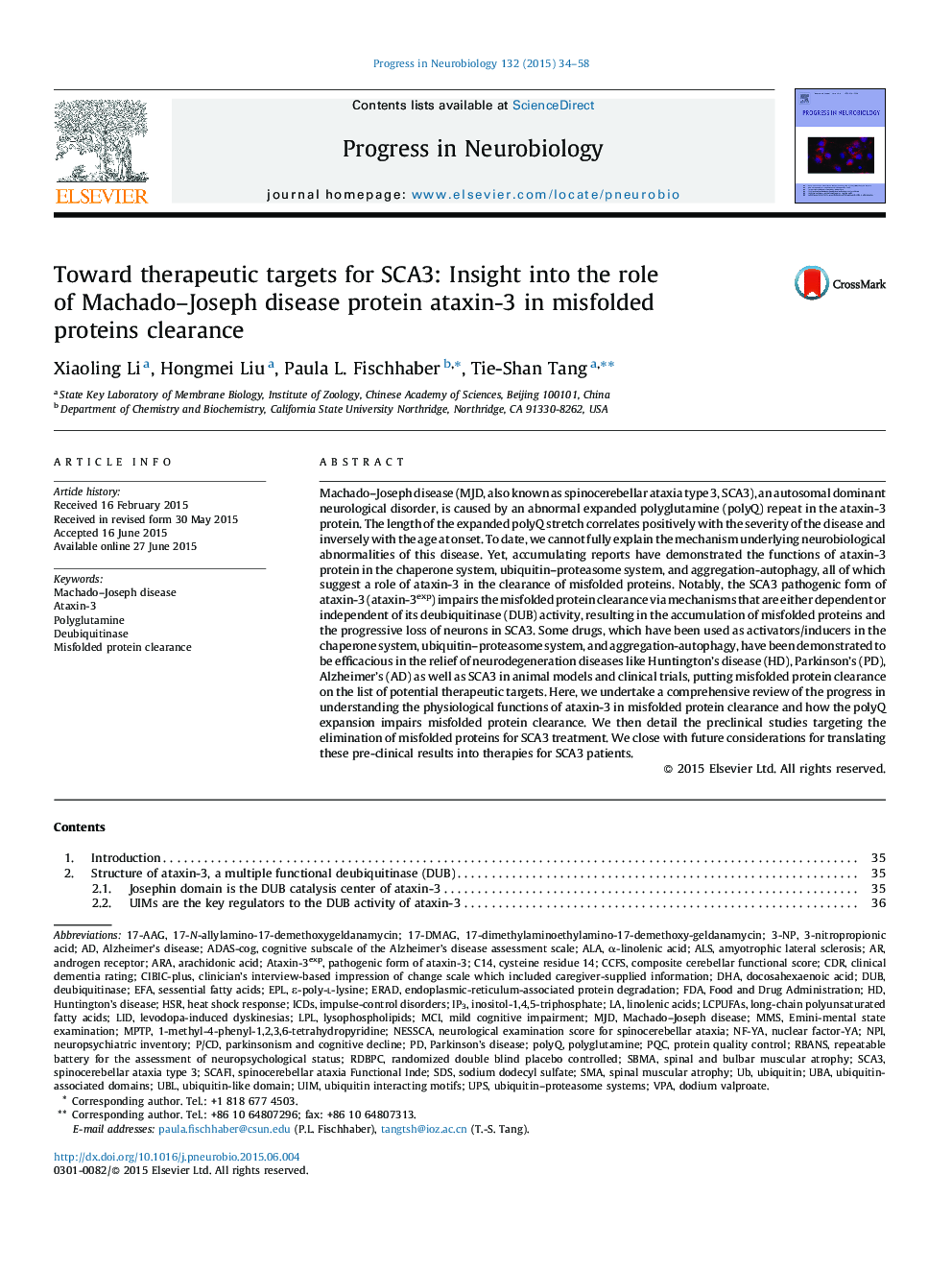| Article ID | Journal | Published Year | Pages | File Type |
|---|---|---|---|---|
| 4353244 | Progress in Neurobiology | 2015 | 25 Pages |
•UIM domains and Josephin domain confer the ubiquitin trimming activity of ataxin-3.•Ataxin-3 is actively involved in the clearance misfolded proteins.•Pathogenic ataxin-3 impairs the misfolded protein clearance.•Targeting misfolded protein clearance holds great therapeutic potential to treat SCA3.
Machado–Joseph disease (MJD, also known as spinocerebellar ataxia type 3, SCA3), an autosomal dominant neurological disorder, is caused by an abnormal expanded polyglutamine (polyQ) repeat in the ataxin-3 protein. The length of the expanded polyQ stretch correlates positively with the severity of the disease and inversely with the age at onset. To date, we cannot fully explain the mechanism underlying neurobiological abnormalities of this disease. Yet, accumulating reports have demonstrated the functions of ataxin-3 protein in the chaperone system, ubiquitin–proteasome system, and aggregation-autophagy, all of which suggest a role of ataxin-3 in the clearance of misfolded proteins. Notably, the SCA3 pathogenic form of ataxin-3 (ataxin-3exp) impairs the misfolded protein clearance via mechanisms that are either dependent or independent of its deubiquitinase (DUB) activity, resulting in the accumulation of misfolded proteins and the progressive loss of neurons in SCA3. Some drugs, which have been used as activators/inducers in the chaperone system, ubiquitin–proteasome system, and aggregation-autophagy, have been demonstrated to be efficacious in the relief of neurodegeneration diseases like Huntington's disease (HD), Parkinson's (PD), Alzheimer's (AD) as well as SCA3 in animal models and clinical trials, putting misfolded protein clearance on the list of potential therapeutic targets. Here, we undertake a comprehensive review of the progress in understanding the physiological functions of ataxin-3 in misfolded protein clearance and how the polyQ expansion impairs misfolded protein clearance. We then detail the preclinical studies targeting the elimination of misfolded proteins for SCA3 treatment. We close with future considerations for translating these pre-clinical results into therapies for SCA3 patients.
Graphical abstractFigure optionsDownload full-size imageDownload high-quality image (132 K)Download as PowerPoint slide
